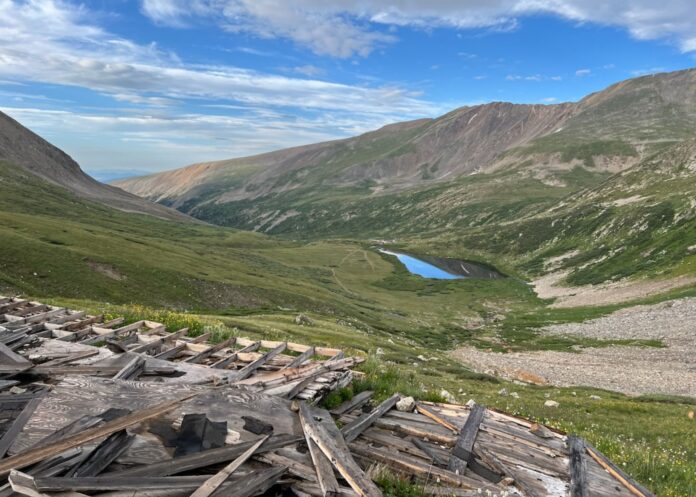
Some of the first transplants to Colorado came during various mining booms, as hopeful miners came to the state to try and make their fortune in the Rocky Mountains. As the numerous waves of mining took hold, towns and mines were built to extract the various precious commodities.
But many of those mines had a limit, and thousands were shuttered when they ran out of accessible minerals. That history has led to an estimated 23,000 abandoned mine sites across the state, according to the Colorado Geological Survey, and many of those mines are now harming the state’s environment.
The damage, according to CGS, comes in a few different ways. Drainage from the mines, when the water mixes with exposed minerals, can damage the water quality of the streams they flow into. The sediment that flows into these mines can also block streams, causing flooding and impacting the health of fish in Colorado’s waterways.
Outside of the streams, dust containing toxic materials from the mines can pollute the air, endangering nearby wildlife and people.
While many of these mines have been abandoned for years, cleaning them up can be difficult, and it’s largely a result of two pieces of federal legislation: the Superfund Act and the Clean Water Act.
The two acts have stringent liability provisions. According to the environmental and natural resources division of the U.S. Department of Justice, liability when it comes to the CWA is strict and has no requirements to prove intent or causation. One key piece of the statute declares that “the discharge of any pollutant by any person shall be unlawful.”
There are exceptions to the rule, and the Environmental Protection Agency administrator is authorized to issue permits for pollutant discharge.
On the Superfund front, there are three separate sections of liability and four types of liable parties, according to the EPA. One of the issues comes with the joint and several liability provision, which holds that any potentially responsible party can be held liable for the entire cleanup of the site.
According to the EPA, that liability can be triggered in four ways: If hazardous waste is present at a facility, if there’s a release or possibility of release of hazardous substances, if response costs have been or will be incurred and if the defendant is a liable party. If that liability is triggered, that party can be responsible for government cleanup costs, the damages to natural resources, the cost of certain health assessments and injunctive relief.
A press release from Colorado Sen. Michael Bennet summarizes the liability issue for groups with good intentions. According to the release, there are organizations that would like to volunteer to clean up the sites, but the liability rules in place from these two acts would leave those organizations legally responsible for the pre-existing pollution from the site, even though the organization wasn’t responsible.
But that could change soon, at least for some mines in the state. A bipartisan bill, including both Colorado senators as original cosponsors, recently passed the U.S. Senate by unanimous consent.
“Abandoned mines threaten our water, soil, and quality of life. But we turn away agencies and groups who are ready to help,” Sen. John Hickenlooper said in a press release. “It’s time we welcome all the help we can get to clean up these mines and protect our watershed and ecosystems.”
The bill would create a specific Good Samaritan pilot program in the EPA, allowing the agency to issue permits to “Good Samaritans” to work on cleaning up the mines without facing potential liability or enforcement actions. It also provides an incentive to land management agencies, through the Good Samaritan Mine Remediation Fund, that authorize good samaritans to conduct these cleanups on federal land.
“Thousands of abandoned mines in Colorado and across the American West threaten our watershed and pollute our ecosystems,” Bennet said in a press release. “I’m grateful for the strong bipartisan support to pass this legislation to make it easier for our state, local governments, and nonprofits to clean up these mines, help reduce pollution, and improve water quality.”
The press release noted that the program is designed for lower-risk projects. The bill currently awaits a hearing in the U.S. House of Representatives.

